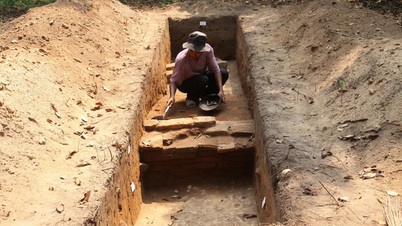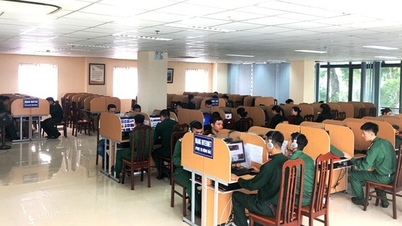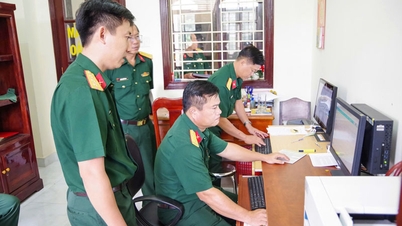Through clinical examination and paraclinical tests, the patient was diagnosed with: septic shock, pneumonia, upper gastrointestinal bleeding, type 2 diabetes, hypertension, acute exacerbation of chronic renal failure. The condition progressed severely, with a high risk of death.
Upon receiving the patient, the prognosis was very serious, the doctors and nurses of the Intensive Care Unit quickly resuscitated the patient according to the protocol. The patient was given fluid replacement, continuous fluid response assessment, vasopressors were used to maintain stable blood pressure, broad-spectrum antibiotics were used, blood sugar and blood lipids were controlled, and symptomatic treatment was provided.
After a period of treatment, the patient is now conscious, vital signs are stable, and has begun eating again orally.
According to doctors, septic shock (or septic shock) is the most severe stage of a continuous process starting from a systemic inflammatory response due to infection, severe infection, septic shock and multiple organ failure.
When moving to the septic shock stage, the patient has sepsis accompanied by hypotension and cardiovascular dysfunction. At this stage, the prognosis is quite severe, the risk of death can be up to 40 - 60%.
MSc. Dr. Nguyen Dang Quan, Deputy Head of Intensive Care Department - Central Endocrinology Hospital said: Symptoms and signs of sepsis can be difficult to detect and are often easily confused with other emergency diseases (eg: Cardiogenic shock, hypovolemic shock, pulmonary embolism, etc.). Especially in diabetic patients, clinical symptoms are often vague and difficult to detect without careful and systematic examination.
With sepsis, patients often have symptoms of systemic inflammatory response syndrome (SIRS) including: High fever (> 38 degrees Celsius or possibly hypothermia 20 times/minute), tachycardia (pulse > 90 times/minute), but blood pressure remains normal.
Other signs of an infectious cause may be present such as: difficulty breathing, coughing up phlegm, yellow/green phlegm if there is a respiratory infection or painful urination, frequent urination, pus in urine if there is a urinary tract infection, etc.
As sepsis worsens or septic shock develops, an early sign is noted: hypotension, accompanied by impaired consciousness. Blood pressure drops, but the skin remains warm. Then, if not diagnosed and treated promptly, the extremities often become cold and pale, with peripheral cyanosis. Progressive multiple organ failure will quickly lead to death.
MSc. Dr. Nguyen Dang Quan recommends that, with the danger of septic shock in particular and sepsis in general, as soon as the above symptoms appear, patients (especially diabetics) need to go immediately to the nearest medical facility for timely intervention and support./.
Source


![[Photo] General Secretary To Lam attends the 95th Anniversary of the Party Central Office's Traditional Day](https://vphoto.vietnam.vn/thumb/1200x675/vietnam/resource/IMAGE/2025/10/18/1760784671836_a1-bnd-4476-1940-jpg.webp)

![[Photo] Collecting waste, sowing green seeds](https://vphoto.vietnam.vn/thumb/1200x675/vietnam/resource/IMAGE/2025/10/18/1760786475497_ndo_br_1-jpg.webp)































































































Comment (0)